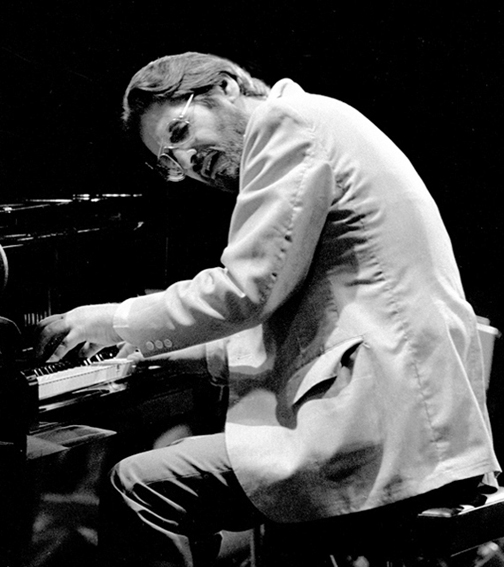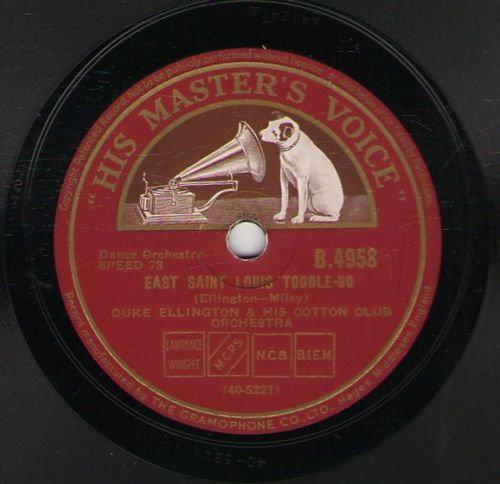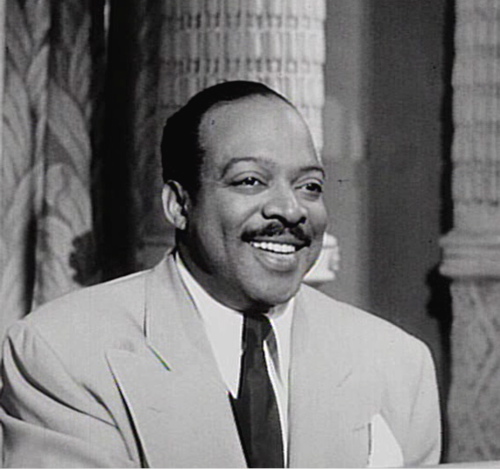|
Locked Hands Style
Locked hands style is a technique of chord voicing for the piano. Popularized by the jazz pianist George Shearing, it is a way to implement the "block chord" method of harmony on a keyboard instrument. The locked hands technique requires the pianist to play the melody using both hands in unison. The right hand plays a 4-note chord inversion in which the melody note is the highest note in the voicing. The other 3 notes of the chord are voiced as closely as possible below the melody note, which is the definition of a block chord. The left hand doubles the melody note one octave lower. To achieve this result, the pianist's hands must be placed close together on the keyboard and both hands move simultaneously in the same direction. To an observer, the pianist's hands appear to be locked together. The technique had been employed by numerous jazz pianists prior to Shearing, such as Phil Moore, Duke Ellington, Count Basie and Red Garland.Block chord Shearing said he was first exposed to ... [...More Info...] [...Related Items...] OR: [Wikipedia] [Google] [Baidu] |
Jazz Pianist
Jazz piano is a collective term for the techniques pianists use when playing jazz. The piano has been an integral part of the jazz idiom since its inception, in both solo and ensemble settings. Its role is multifaceted due largely to the instrument's combined melodic and harmonic capabilities. For this reason it is an important tool of jazz musicians and composers for teaching and learning jazz theory and set arrangement, regardless of their main instrument. By extension the phrase 'jazz piano' can refer to similar techniques on any keyboard instrument. Along with the guitar, vibraphone, and other keyboard instruments, the piano is one of the instruments in a jazz combo that can play both single notes and chords rather than only single notes as does the saxophone or trumpet. Beginning A new style known as “stride” or “Harlem stride” emerged during the 1920s, predominantly in New York. James P. Johnson was a prominent adherent. The left hand was used to establish rhythm ... [...More Info...] [...Related Items...] OR: [Wikipedia] [Google] [Baidu] |
George Shearing
Sir George Albert Shearing, (13 August 1919 14 February 2011) was a British jazz pianist who for many years led a popular jazz group that recorded for Discovery Records, MGM Records and Capitol Records. Shearing was the composer of over 300 titles, including the jazz standards "Lullaby of Birdland" and " Conception", and had multiple albums on the '' Billboard'' charts during the 1950s, 1960s, 1980s and 1990s. He died of heart failure in New York City, at the age of 91. Biography Early life Born in Battersea, London, Shearing was the youngest of nine children. He was born blind to working-class parents: his father delivered coal and his mother cleaned trains in the evening. He started to learn piano at the age of three and began formal training at Linden Lodge School for the Blind, where he spent four years. Though he was offered several scholarships, Shearing opted to perform at a local pub, the Mason's Arms in Lambeth, for "25 bob a week" playing piano and accordion. He ... [...More Info...] [...Related Items...] OR: [Wikipedia] [Google] [Baidu] |
Block Chord
A block chord is a chord or voicing built directly below the melody either on the strong beats or to create a four-part harmonized melody line in " locked-hands" rhythmic unison with the melody, as opposed to broken chords. This latter style, known as Shearing voicing, was popularized by George Shearing, but originated with Phil Moore. Block chord style (also known as chorale style) uses simple chordal harmony in which "the notes of each chord may be played all at once" as opposed to being "played one at a time (broken or arpeggiated A broken chord is a chord broken into a sequence of notes. A broken chord may repeat some of the notes from the chord and span one or more octaves. An arpeggio () is a type of broken chord, in which the notes that compose a chord are played ... chords). For example, a guitarist can strum the chord (this would be a "block" chord) or use a picking style to play "broken" chords". Notes Sources * * Further reading * Chords ... [...More Info...] [...Related Items...] OR: [Wikipedia] [Google] [Baidu] |
Phil Moore (jazz Musician)
Phil Moore (February 20, 1918 – May 13, 1987) was an American jazz pianist, arranger, and bandleader. Biography Moore was orphaned and placed in a county hospital in Portland, Oregon. He attended the Cornish School and the University of Washington in Seattle. When Moore was 13, he played piano at speakeasies and small venues in Portland. In 1937 He married Neva Mary Peoples; a pianist, actress and a vocalist of San Francisco, Ca. He supported Lena Horne, Frank Sinatra, Bobby Short, Marshal Royal, Irving Ashby, Julie Wilson, Gene Sedric, Les Hite, and Helen Gallagher. He arranged big-band music for the Tommy Dorsey and Harry James orchestras. In 1946, he played the role of a band leader in a short B movie, ''Stars on Parade''. About this time, his relationship with Dorothy Dandridge helped bring her success in a nightclub singing career. Moore served as vocal coach for other performers in Hollywood, including Marilyn Monroe and Ava Gardner. Phil Moore worked at MGM an ... [...More Info...] [...Related Items...] OR: [Wikipedia] [Google] [Baidu] |
Duke Ellington
Edward Kennedy "Duke" Ellington (April 29, 1899 – May 24, 1974) was an American jazz pianist, composer, and leader of his eponymous jazz orchestra from 1923 through the rest of his life. Born and raised in Washington, D.C., Ellington was based in New York City from the mid-1920s and gained a national profile through his orchestra's appearances at the Cotton Club in Harlem. A master at writing miniatures for the three-minute 78 rpm recording format, Ellington wrote or collaborated on more than one thousand compositions; his extensive body of work is the largest recorded personal jazz legacy, and many of his pieces have become standards. He also recorded songs written by his bandsmen, such as Juan Tizol's " Caravan", which brought a Spanish tinge to big band jazz. At the end of the 1930s, Ellington began a nearly thirty-year collaboration with composer-arranger-pianist Billy Strayhorn, whom he called his writing and arranging companion. With Strayhorn, he composed multipl ... [...More Info...] [...Related Items...] OR: [Wikipedia] [Google] [Baidu] |
Count Basie
William James "Count" Basie (; August 21, 1904 – April 26, 1984) was an American jazz pianist, organist, bandleader, and composer. In 1935, he formed the Count Basie Orchestra, and in 1936 took them to Chicago for a long engagement and their first recording. He led the group for almost 50 years, creating innovations like the use of two "split" tenor saxophones, emphasizing the rhythm section, riffing with a big band, using arrangers to broaden their sound, and others. Many musicians came to prominence under his direction, including the tenor saxophonists Lester Young and Herschel Evans, the guitarist Freddie Green, trumpeters Buck Clayton and Harry "Sweets" Edison, plunger trombonist Al Grey, and singers Jimmy Rushing, Helen Humes, Thelma Carpenter, and Joe Williams. Biography Early life and education William Basie was born to Lillian and Harvey Lee Basie in Red Bank, New Jersey. His father worked as a coachman and caretaker for a wealthy judge. After automobiles replaced ... [...More Info...] [...Related Items...] OR: [Wikipedia] [Google] [Baidu] |
Red Garland
William McKinley "Red" Garland Jr. (May 13, 1923 – April 23, 1984) was an American modern jazz pianist. Known for his work as a bandleader and during the 1950s with Miles Davis, Garland helped popularize the block chord style of playing in jazz piano. Early life William "Red" Garland was born in 1923 in Dallas, Texas. He began his musical studies on the clarinet and alto saxophone but, in 1941, switched to the piano. Less than five years later, Garland joined the trumpet player Hot Lips Page, well-known in the southwest, playing with him until a tour ended in New York in March 1946. With Garland having decided to stay in New York to find work, Art Blakey came across Garland playing at a small club, only to return the next night with his boss, Billy Eckstine. Garland also had a short-lived career as a welterweight boxer in the 1940s. He fought more than 35 fights, one being an exhibition bout with Sugar Ray Robinson. Later life and career 1955–1958: the first great Miles Dav ... [...More Info...] [...Related Items...] OR: [Wikipedia] [Google] [Baidu] |
Block Chord
A block chord is a chord or voicing built directly below the melody either on the strong beats or to create a four-part harmonized melody line in " locked-hands" rhythmic unison with the melody, as opposed to broken chords. This latter style, known as Shearing voicing, was popularized by George Shearing, but originated with Phil Moore. Block chord style (also known as chorale style) uses simple chordal harmony in which "the notes of each chord may be played all at once" as opposed to being "played one at a time (broken or arpeggiated A broken chord is a chord broken into a sequence of notes. A broken chord may repeat some of the notes from the chord and span one or more octaves. An arpeggio () is a type of broken chord, in which the notes that compose a chord are played ... chords). For example, a guitarist can strum the chord (this would be a "block" chord) or use a picking style to play "broken" chords". Notes Sources * * Further reading * Chords ... [...More Info...] [...Related Items...] OR: [Wikipedia] [Google] [Baidu] |
Milt Buckner
Milton Brent Buckner (July 10, 1915 – July 27, 1977) was an American jazz pianist and organist, who in the early 1950s popularized the Hammond organ.Arwulf ArwulfMilt Buckner biography All Music. He pioneered the parallel chords styleFeather, Leonard, & Ira Gitler (2007). ''The Biographical Encyclopedia of Jazz''. Oxford University Press. that influenced Red Garland, George Shearing, Bill Evans, and Oscar Peterson. Buckner's brother, Ted Buckner, was a jazz saxophonist. Early life and career Milton Brent Buckner was born in St. Louis, Missouri, United States. His parents encouraged him to learn to play piano, but they both died when he was nine years old. Milt and his younger brother Ted were sent to Detroit where they were adopted by members of the Earl Walton band: trombonist John Tobias, drummer George Robinson fostered Milt and reedplayer Fred Kewley ( Fred Cecil Kewley; 1889–1953) fostered Ted.Lars Bjorn with Jim Gallert''Before Motown: A History of Jazz in Detroit, 1 ... [...More Info...] [...Related Items...] OR: [Wikipedia] [Google] [Baidu] |
Lionel Hampton
Lionel Leo Hampton (April 20, 1908 – August 31, 2002) was an American jazz vibraphonist, pianist, percussionist, and bandleader. Hampton worked with jazz musicians from Teddy Wilson, Benny Goodman, and Buddy Rich, to Charlie Parker, Charles Mingus, and Quincy Jones. In 1992, he was inducted into the Alabama Jazz Hall of Fame, and he was awarded the National Medal of Arts in 1996. Biography Early life Lionel Hampton was born in 1908 in Louisville, Kentucky, and was raised by his mother. Shortly after he was born, he and his mother moved to her hometown of Birmingham, Alabama. He spent his early childhood in Kenosha, Wisconsin, before he and his family moved to Chicago, Illinois, in 1916. As a youth, Hampton was a member of the Bud Billiken Club, an alternative to the Boy Scouts of America, which was off-limits because of racial segregation. During the 1920s, while still a teenager, Hampton took xylophone lessons from Jimmy Bertrand and began to play drums. Hampton was raised ... [...More Info...] [...Related Items...] OR: [Wikipedia] [Google] [Baidu] |
Glenn Miller
Alton Glen Miller (March 1, 1904 – December 15, 1944) was an American big band founder, owner, conductor, composer, arranger, trombone player and recording artist before and during World War II, when he was an officer in the United States Army Air Forces, US Army Air Forces. Glenn Miller Orchestra, Glenn Miller and His Orchestra was one of the most popular and successful bands of the 20th century and the big band era. His military group, the Major Glenn Miller Army Air Forces Orchestra, was also popular and successful. Glenn Miller and His Orchestra was the best-selling recording band from 1939 to 1942. It did not have a string section, but did have a slap bass in the rhythm section. It was also a touring band that played multiple radio broadcasts nearly every day. Their best-selling records include Miller's iconic theme song"Moonlight Serenade"and the first gold record ever made, "Chattanooga Choo Choo". The following tunes are also on that best-seller list: "In the Moo ... [...More Info...] [...Related Items...] OR: [Wikipedia] [Google] [Baidu] |



.jpg)
